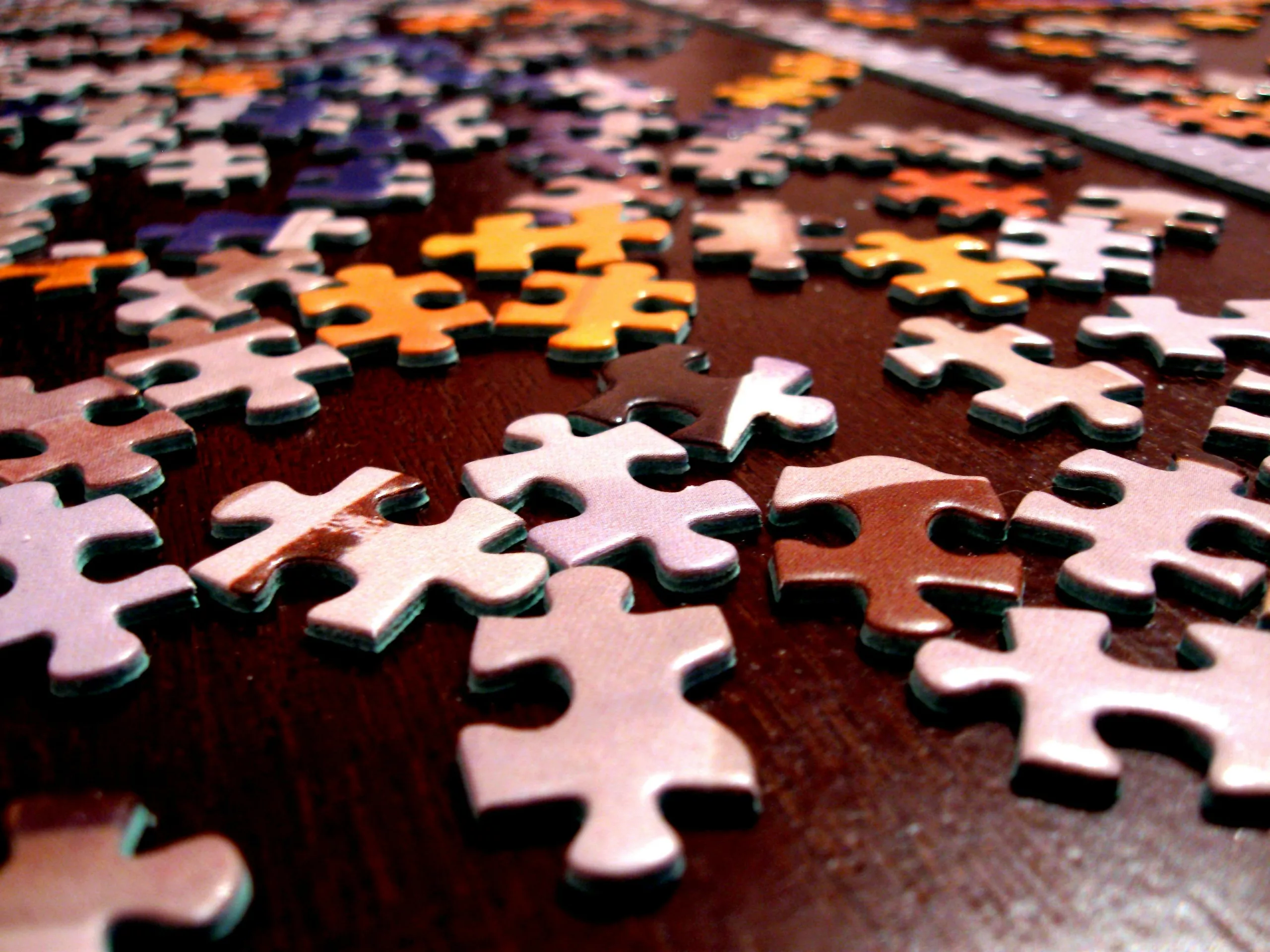Habits. For better, or for worse, they shape our lives in profound and often unnoticed ways, quietly dictating our daily routines, behaviours, and ultimately, our destinies. From the moment we wake up in the morning to those last thoughts that drift through our minds before sleep, our habits guide our actions with the precision of a well-practiced dance. They’re the invisible threads that weave the fabric of our existence, forming the foundation upon which our successes, failures, and everything in between are built. And while the science behind habit formation may at times seem to elude us, it’s not at all as complicated as some might suggest.
How so?
Well, in what you know about them, answer me these two questions: What exactly are habits, and how do they come to wield such incredible power over us?
At their core, habits are deeply ingrained patterns of behaviour that we perform automatically, once programmed, often without conscious thought or effort, right? So they’re basically the result of countless repetitions, etching themselves into the circuitry of our brains until they become second nature. Whether it’s reaching for a cup of coffee first thing in the morning or mindlessly scrolling through social media before bed, formed habits shape the very rhythm of our days with remarkable consistency.
Yet, beneath their seemingly mundane surface or existence lies a fascinating world of neuroscience and psychology (IMO, at least), where intricate neural circuits and complex biochemical processes govern our every move. It’s in that realm – in the depths of our brain, that the magic of habit formation unfolds, driven by a phenomenon known as neuroplasticity.
C’mon, Class…if you’ve been paying attention at all, you’ve heard me talk about neuroplasticity.
This neuroplasticity, this remarkable capacity for change allows our brains to rewire themselves in response to repetitive experience(s), sculpting new pathways and connections with each repetition of the behaviour.

As we journey deeper into the science of habit formation (throughout our site, over time), we’ll often explore the mechanisms by which habits are forged and the role of neuroplasticity in shaping our behaviours. I, with the help of the odd guest writer in future articles will work to uncover the hidden forces that drive our habits, from genetic predispositions to environmental influences. It will be our opportunity to help you discover how understanding these factors can empower us to take control of our lives and rewrite our destinies. Whether trying to tap into the more recognized, old-school count of Covey’s 7 Habits…, or you’re more for the lighthearted change of someone like James Clear and his Atomic Habits, education and awareness in how we create and change is key.
So, buckle up Habit Revolutionaries, and prepare to embark on another of our journeys of self-discovery and transformation as we unravel the mysteries of habit formation and unlock the secrets to personal growth and development. Whether you’re looking to break free from old patterns, cultivate healthier habits, or unleash your full potential, the insights and strategies that await should help equip you with the knowledge and tools you need to succeed.
Quick Overview of Habit Formation
Ok, so habits are the building blocks of our daily lives, shaping our actions, decisions, and outcomes with remarkable consistency.
Covered.
At their essence, habits are repetitive behaviours that become automatic over time, driven by the brain’s innate desire for efficiency and conservation of energy. Whether it’s brushing our teeth, tying our shoelaces, or navigating our morning commute, habits streamline our actions and free up cognitive resources for more complex tasks.

But what sets habits apart from other forms of behaviour? Well, unlike our otherwise conscious actions – that require deliberate thought and intention, habits operate on autopilot, essentially, triggered by specific cues or contexts and executed with minimal conscious effort. This automaticity (if you’ve worked through my Mindfulness Mastery course, you’ll remember this word) is the hallmark of habits, enabling us to perform routine tasks with little to no conscious awareness.
However, the formation of habits is not some random or haphazard process. Not in the least. Rather, habit formation follows a very distinct pattern governed by the brain’s intricate neural circuitry. This process begins with a cue, a trigger that signals the brain to initiate a specific behaviour. Whether it’s the sight of a donut on your kitchen counter or the sound of our alarm clock that may be sounding entirely too early in the morning, cues serve as prompts that activate the habit loop and set the stage for action.
Next in this process comes the routine, the actual behaviour or action that follows the cue. This is the meat of the habit, the series of actions that we perform automatically in response to the cue (again, once the habit is formed, right?). Whether it’s reaching for the donut and taking a bite, hitting the snooze button and rolling over in bed, or maybe counting backward from 5 and taking immediate action – as Mel Robbins suggests in The 5 Second Rule, the routine is where the habit becomes manifest in our behaviour.
Finally, there’s the reward part of all of this; the positive outcome or reinforcement that follows the completion of the routine. This can take many forms, from the immediate pleasure of indulging in a sugary treat to the sense of accomplishment that comes from completing a task. Whatever form it takes, the reward serves to reinforce the habit loop, strengthening the association between the cue, the routine, and the desired outcome.
In essence, our habits are the product of a finely tuned feedback loop that operates within our brain, driven by a combination of neural pathways, neurotransmitters, and environmental cues. And by understanding the underlying mechanisms within our habit formation, we gain useful insight into how our habits are created, sustained, and ultimately, changed (the part I can’t do for you, but we’ll educate you, just the same).
In what’s to come here, we’ll go a bit deeper into the science behind habit formation, exploring the role of neuroplasticity and actionable strategies for cultivating positive habits and achieving personal growth. So, let’s dive in and uncover the secrets of habit formation together.
Understanding the Neurobiology of Habit Formation
Neuroplasticity, the brain’s remarkable ability to reorganize and adapt, lies at the heart of habit formation. When we repeat a behaviour over and over again, our brains undergo physical changes, rewiring themselves to make that behaviour more automatic (follow us long enough, you’ll hear us speaking on synaptic pruning, etc.). This process involves the strengthening of synaptic connections and the release of neurotransmitters like dopamine, which reinforce rewarding behaviours.
I should also point out that recent research has also highlighted the role of genetics and epigenetics in shaping our propensity for habit formation. Certain genetic variations can predispose individuals to forming habits more easily, while environmental factors such as upbringing and social influences also play a significant role.
Now, does that give you a pass on not creating new habits – or in breaking the old(er), unwanted or unhealthy ones? Sorry, no…but it just may explain why it takes you longer – or why you have to work harder at it than other people.

Actionable Tips for Cultivating Positive Habits
So, how can we leverage the science of habit formation to our advantage? Here are a handful of actionable tips – backed by scientific research, that can serve as a basic outline in getting you started:
- Start Small: Break down big goals into smaller, more manageable, regular or daily tasks. By focusing on achievable milestones, you’ll build momentum and increase your chances of success.
- Create Cue-Routine-Reward Loops: Structure your environment to create clear cues that trigger desired behaviours. Follow through with consistent routines and reward yourself for your efforts. This reinforces the habit loop and strengthens the neural pathways associated with it.
- Use Implementation Intentions: Formulate specific plans detailing when, where, and how you’ll engage in desired behaviours. This increases your likelihood of following through on intentions and helps you to stay on track.
- Practice Mindfulness: Cultivate awareness of your thoughts, emotions, and behaviours through mindfulness practices. Being ‘present’, or in the ‘here and now’. This enhances self-regulation and empowers you to both identify and to modify habitual patterns more effectively. And if you’re wanting to go deeper, check out my extraordinary intuitive friend; Candace over at Shifting Light Studio for tips on meditation, yoga, etc.
- Utilize Habit Stacking: Anchor new habits to existing routines to piggyback on established neural pathways. This makes it easier to adopt new behaviours and reinforces their association with familiar cues.
- Track Progress and Celebrate Wins: Keep track of your progress and celebrate small victories along the way. Acknowledging achievements releases dopamine in the brain, reinforcing positive behaviours and motivating you to continue.
Now, here’s the thing; are these 6 tips an adequate substitute for a full training or course that walks you through every aspect of habit formation and support? All while enhancing every bit of your activity with nutrition and lifestyle tips and hacks, group support and more? Of course not, and that’s what the Habit Revolution Challenge by our sister company; ENERGIA VITA is for!
Sorry…couldn’t help but place a somewhat shameless plug here. But truly, with 172 days of insights, education, and support, we designed the Challenge with the sciences of neurology AND nutrition and lifestyle in order to provide you your best shot at lasting habit formation and change, so you’re welcome. 😉

Additional Scientific Insights
Recent studies have shed light on the role of epigenetics in shaping our propensity for habit formation. Epigenetic modifications, such as DNA methylation and histone acetylation, can influence gene expression and alter synaptic plasticity, ultimately impacting our susceptibility to forming habits.
This is to say that our genetic makeup, combined with external factors like our environment and lifestyle choices, can influence how likely we are to develop certain habits.
Think of it like this: just as our genes determine our eye color or height, they also play a role in shaping our behavioral tendencies. But it’s not just our genes calling all the shots; external factors can also leave their mark on our genetic code, affecting how our brains respond to different stimuli.
So, when it comes to forming habits, it’s a complex interplay between our genes, our environment, and our everyday choices that ultimately determines our behavioural patterns.
What’s more, environmental factors such as stress, social interactions, and lifestyle choices can modulate gene expression and contribute to individual differences in habit formation (and we often cover more of the genomic side of my work over at ENERGIA VITA, if you’d like to check us out over there).
Understanding these underlying mechanisms can inform personalized approaches to habit change and enhance the effectiveness of interventions aimed at promoting positive behaviours.
Wrapping This Up For You
Given what we now know in the community of the neurosciences, the exploration into habit formation offers valuable insights in the mechanisms underlying behaviour change and personal development.
If we’re open to harnessing the principles of neuroplasticity – and adopting evidence-based strategies for habit cultivation, we can empower ourselves to break free from old patterns and create positive, lasting change in their lives.
So whether embarking on a journey of self-discovery through a comprehensive course or implementing some of the quick, actionable tips for habit change from above, your path to transformation begins with what I hope you’re finding is a deeper understanding of your brain’s remarkable capacity for adaptation and growth.



